Abstract
A prospective study of EB virus infections was initiated in July, 1969 in the entering class of 1401 cadets, at the U.S. Military Academy at West Point, N.Y. and continued over 4 yr. On entry 63.5% possessed EBV antibody and 36.5 lacked EBV antibody. The rate of antibody prevalence varied with the geographic area from which the cadet originated.
Except in two cadets already ill on first bleeding no evidence of clinical infectious mononucleosis (I.M.) occurred over the 4 yr period in the 890 cadets entering the Academy with EBV antibody. Among 437 cadets without antibody on entry, 54 or 12.4% were infected (seroconverted) in the freshman year; 15 of these had clinical I.M., 12 had suggestive I.M., and 39 had no known mono-like illness. The annual infection rates in susceptible cadets in the second, third, and fourth years were 24.4, 15.1, and 30.8 per 100, respectively. Of 201 cadets infected with EBV over 4 yr only 26.4% were manifested by heterophile positive clinical infectious mononucleosis. Overall, 46% of the 437 cadets entering without EBV antibody became infected over 40 mo of serologic observation; definite clinical infectious mononucleosis developed in 53 cadets, a clinical attack rate of 12.1 per 100 for 4 yr. The EBV infection rate among exposed and susceptible roommates of known cases was no higher than in roommates not so exposed.
Elevations of EBV-specific and total IgM occurred during acute illness and disappeared in late convalescence. Total IgG and IgA levels were less commonly elevated. EBV-specific-IgM antibody was demonstrable during the acute illness but was absent 12 mo later. Analysis of EBV infection rates revealed no difference among persons of different ABO blood groups.
Full text
PDF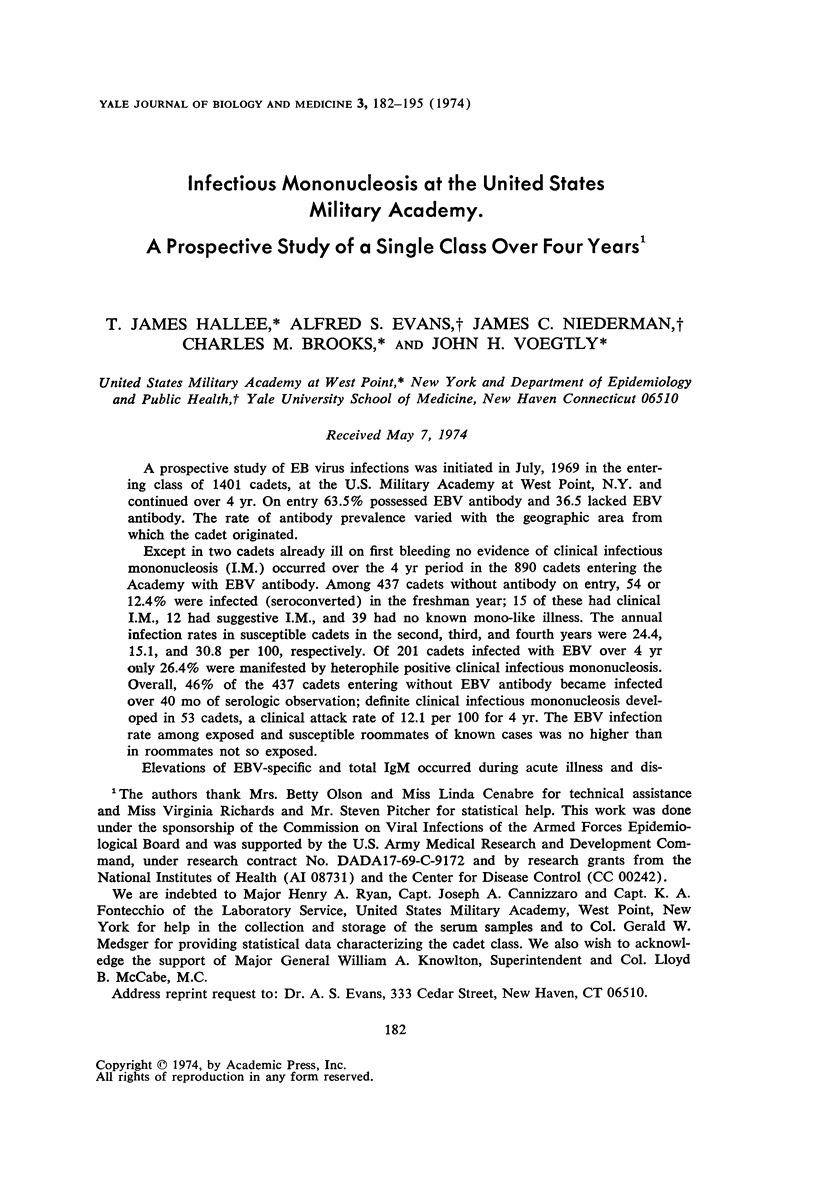
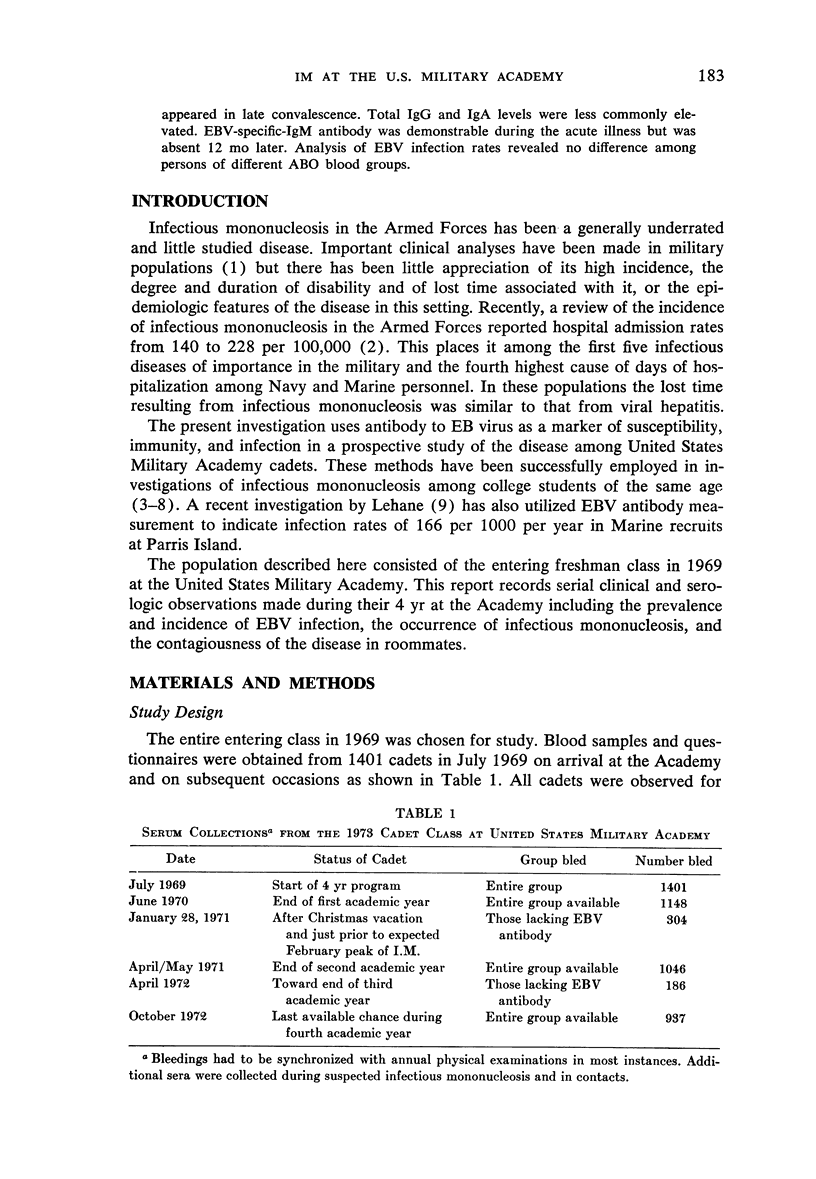
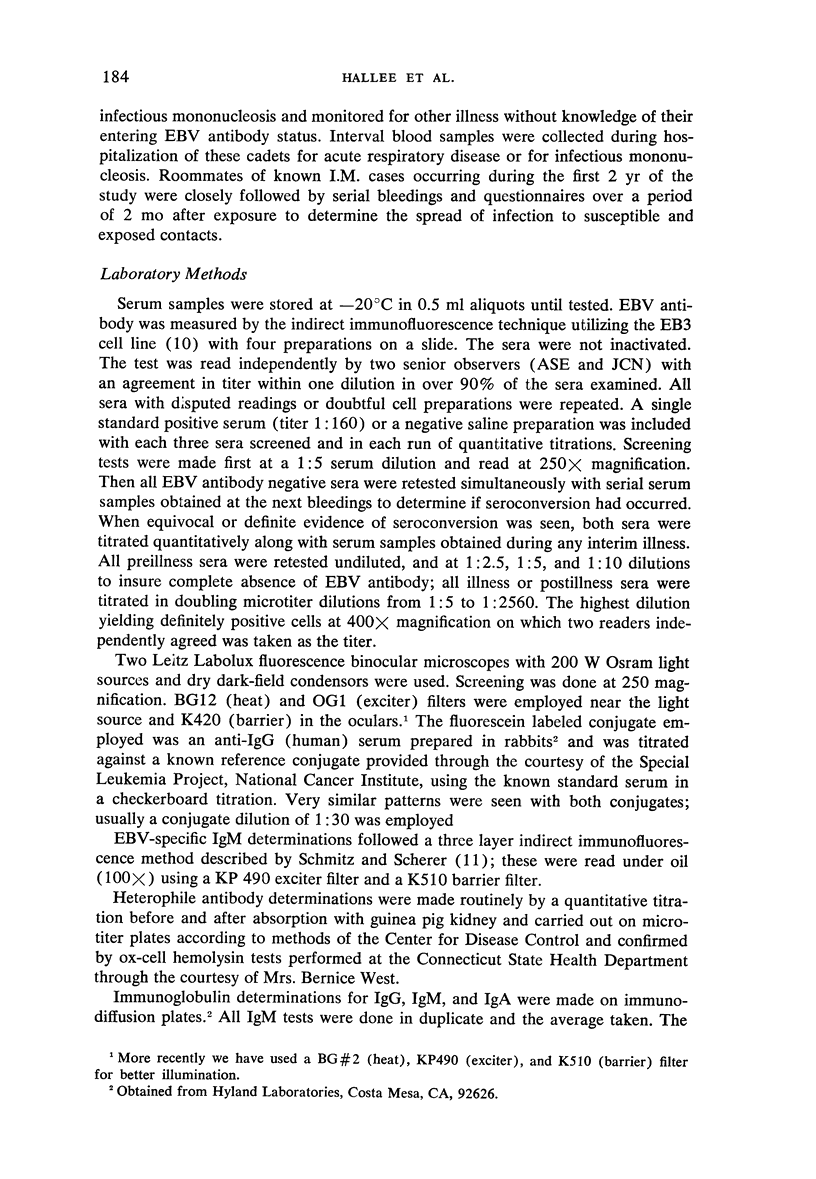
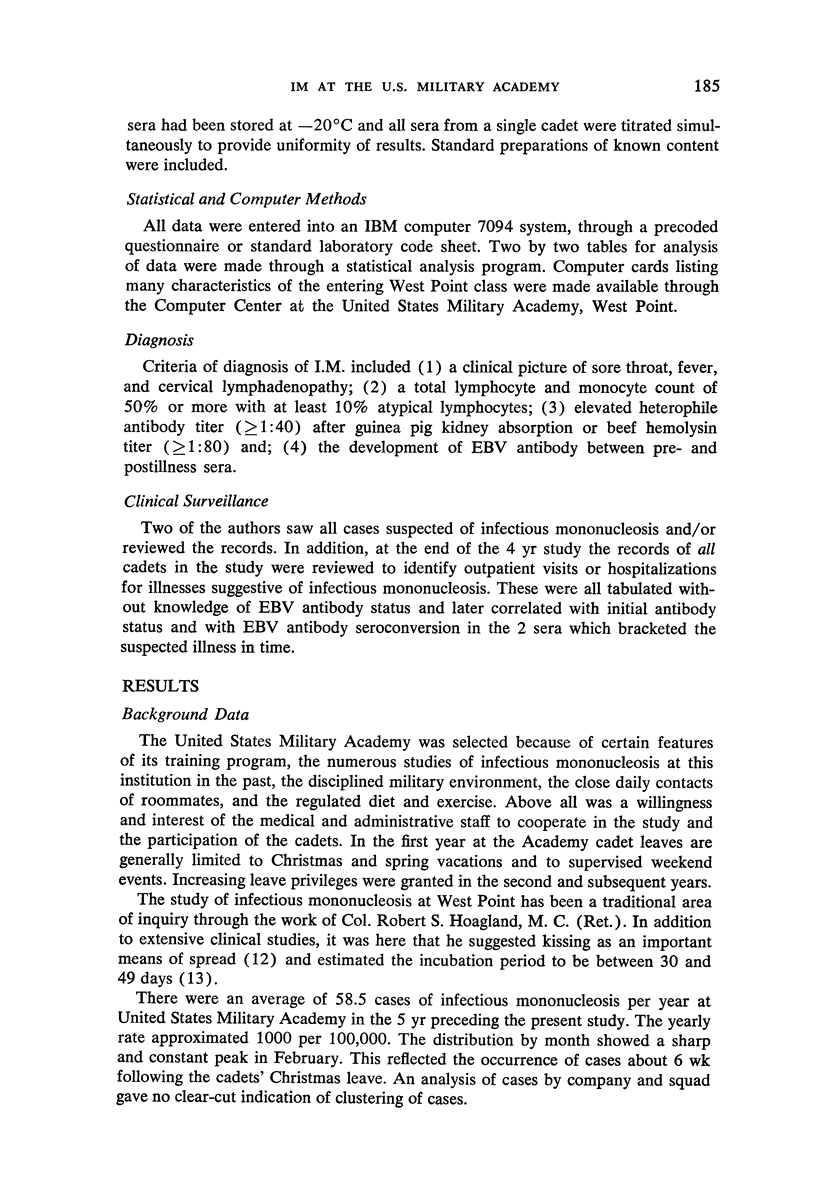
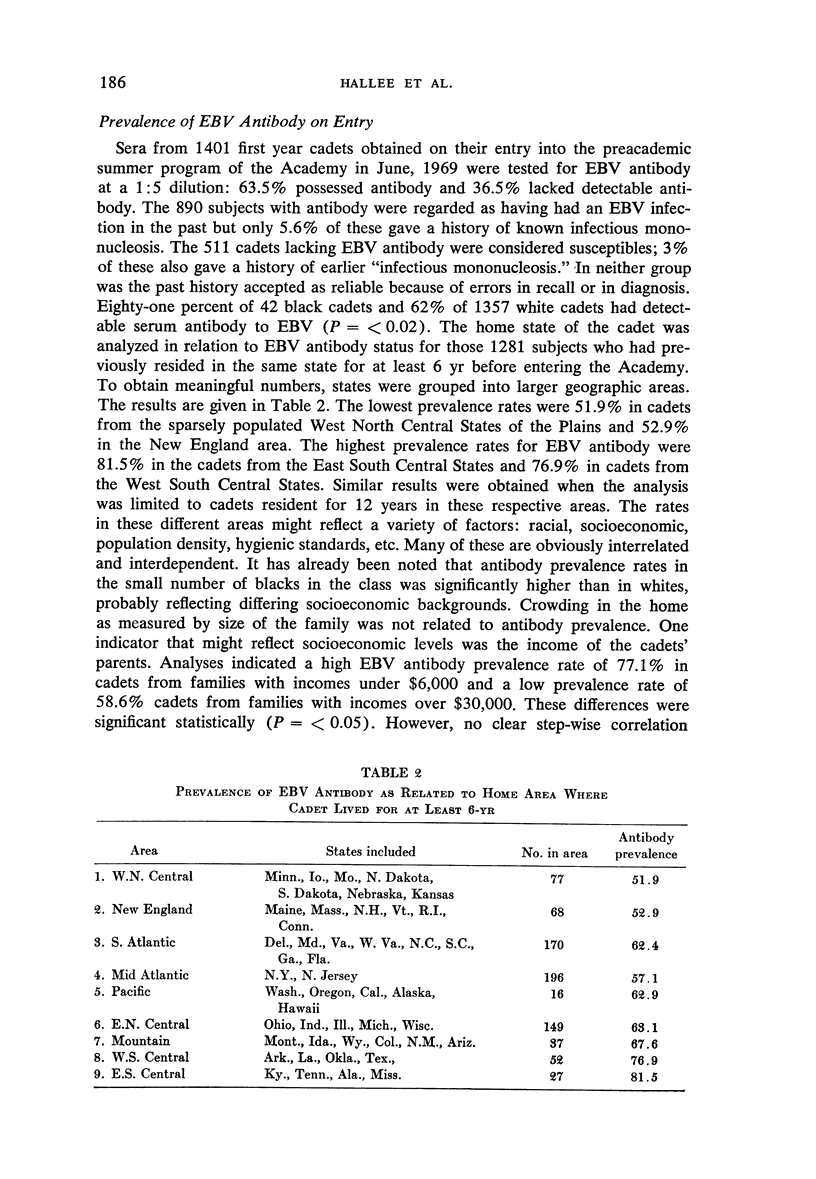


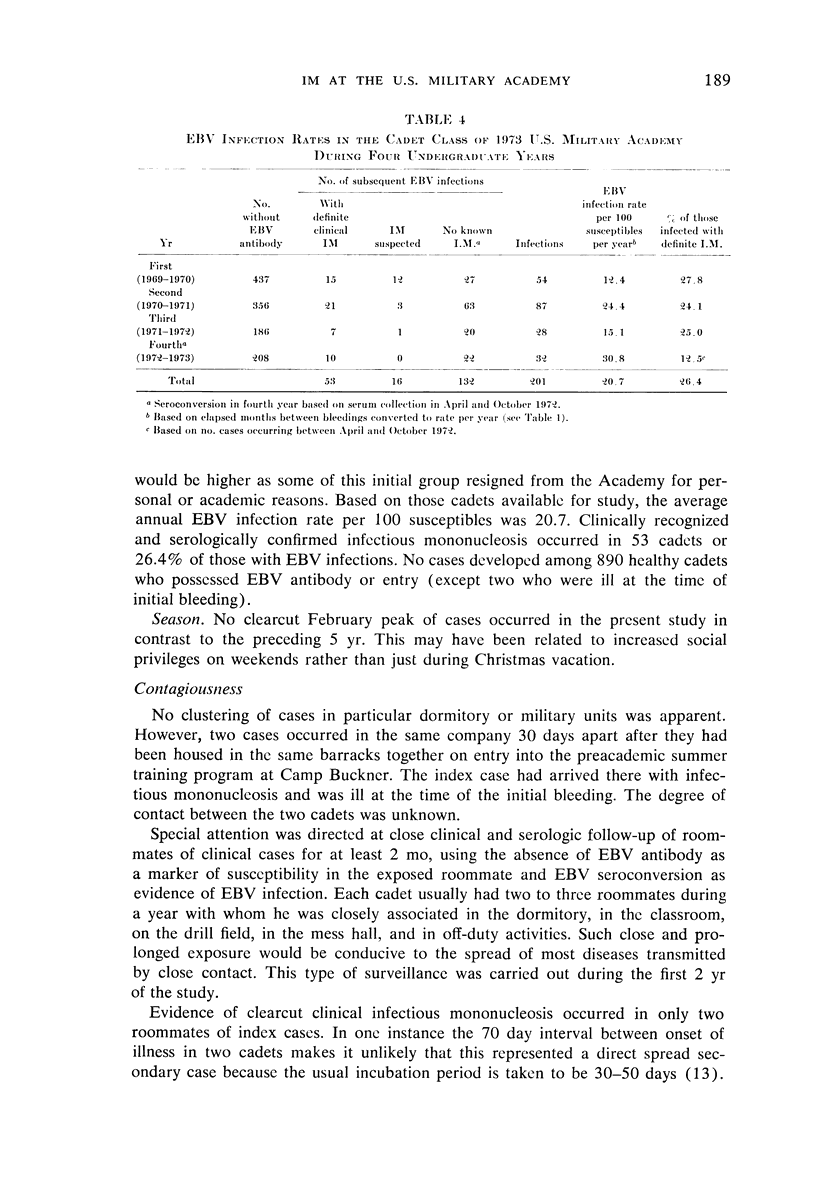
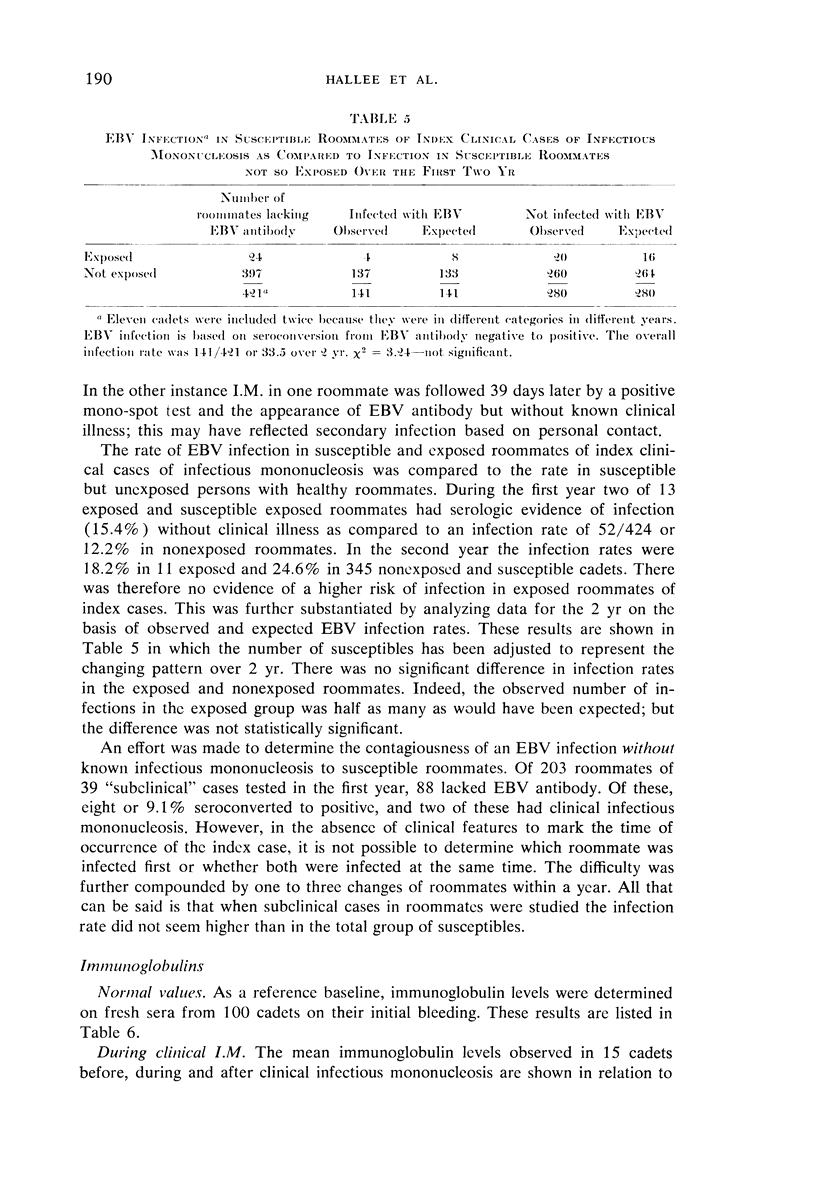
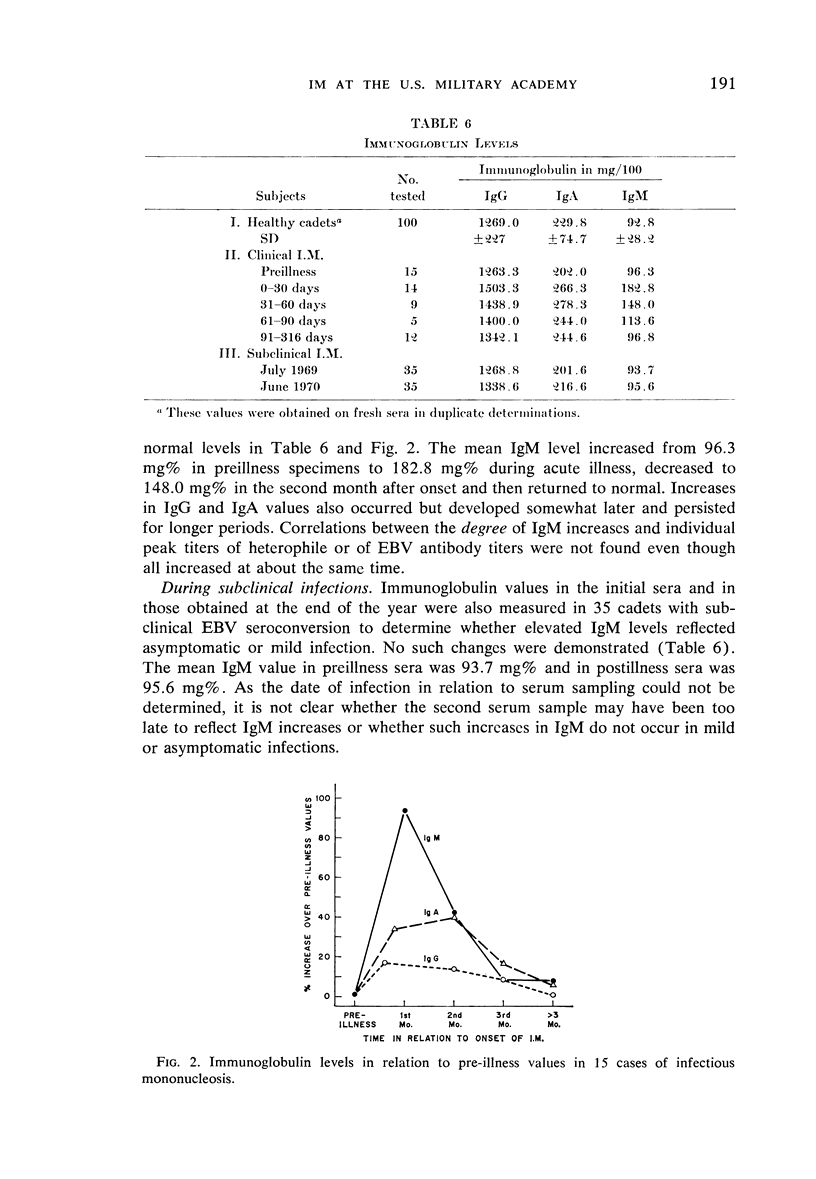
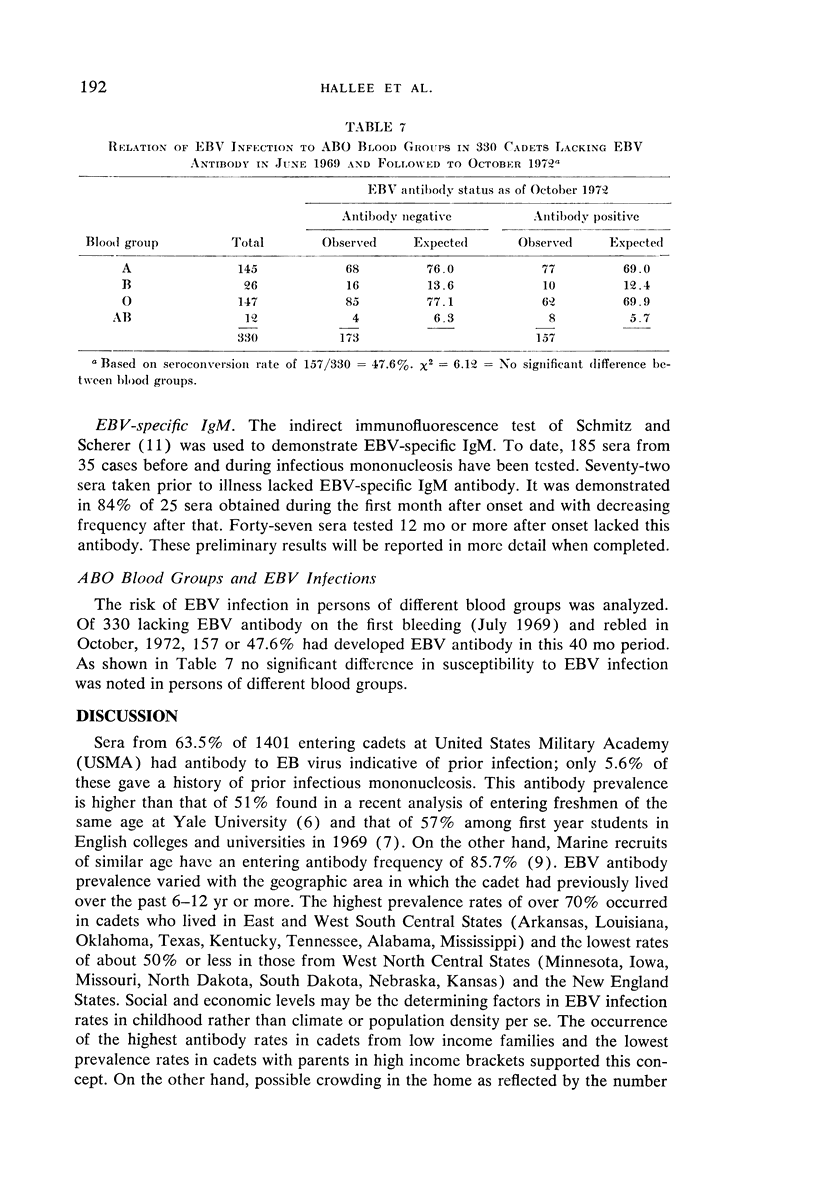
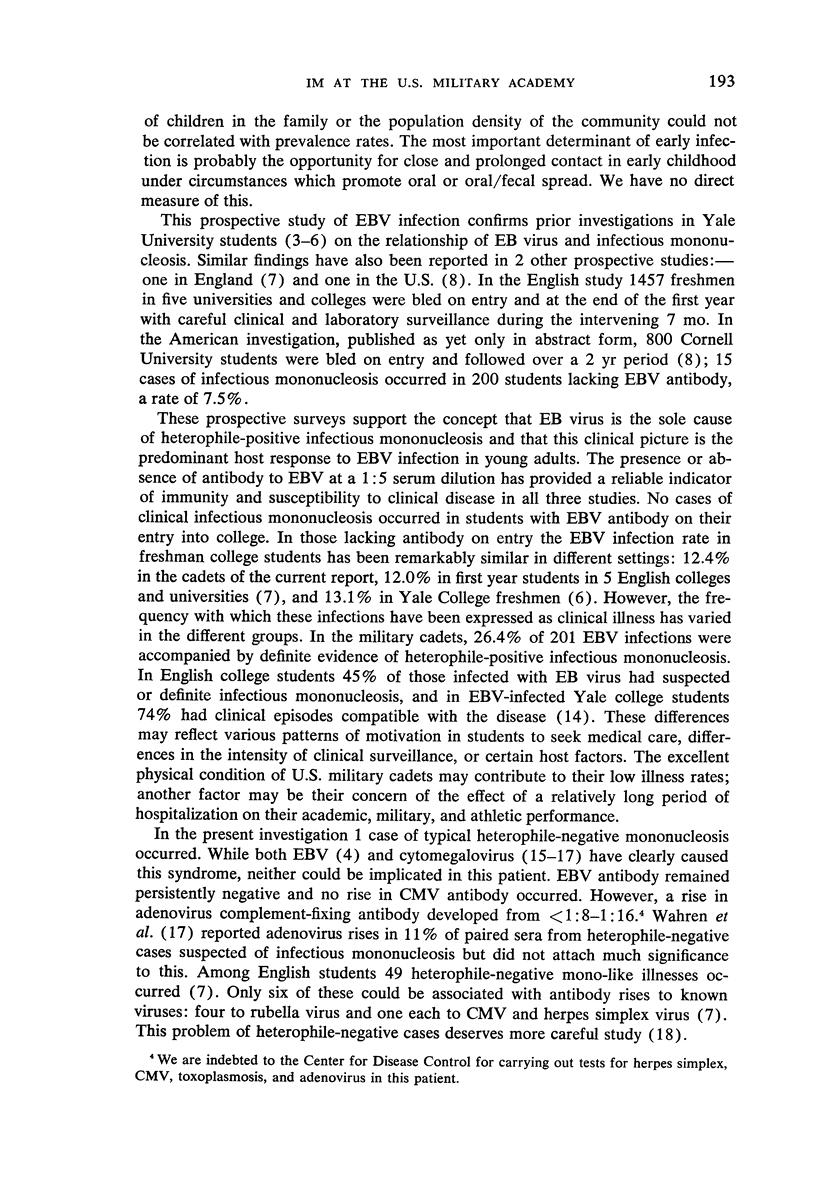


Selected References
These references are in PubMed. This may not be the complete list of references from this article.
- EVANS A. S. Infectious mononucleosis in University of Wisconsin students. Report of a five-year investigation. Am J Hyg. 1960 May;71:342–362. doi: 10.1093/oxfordjournals.aje.a120118. [DOI] [PubMed] [Google Scholar]
- Evans A. S. Infectious mononucleosis and other mono-like syndromes. N Engl J Med. 1972 Apr 13;286(15):836–838. doi: 10.1056/NEJM197204132861511. [DOI] [PubMed] [Google Scholar]
- Evans A. S., Niederman J. C., McCollum R. W. Seroepidemiologic studies of infectious mononucleosis with EB virus. N Engl J Med. 1968 Nov 21;279(21):1121–1127. doi: 10.1056/NEJM196811212792101. [DOI] [PubMed] [Google Scholar]
- Evans A. S., Niederman J. C., Sawyer R. N. Prospective studies of a group of Yale University freshmen. II. Occurrence of acute respiratory infections and rubella. J Infect Dis. 1971 Mar;123(3):271–278. doi: 10.1093/infdis/123.3.271. [DOI] [PubMed] [Google Scholar]
- HOAGLAND R. J. THE INCUBATION PERIOD OF INFECTIOUS MONONUCLEOSIS. Am J Public Health Nations Health. 1964 Oct;54:1699–1705. doi: 10.2105/ajph.54.10.1699. [DOI] [PMC free article] [PubMed] [Google Scholar]
- HOAGLAND R. J. The transmission of infectious mononucleosis. Am J Med Sci. 1955 Mar;229(3):262–272. doi: 10.1097/00000441-195503000-00003. [DOI] [PubMed] [Google Scholar]
- Henle G., Henle W. Immunofluorescence in cells derived from Burkitt's lymphoma. J Bacteriol. 1966 Mar;91(3):1248–1256. doi: 10.1128/jb.91.3.1248-1256.1966. [DOI] [PMC free article] [PubMed] [Google Scholar]
- Jordan M. C., Rousseau W., Stewart J. A., Noble G. R., Chin T. D. Spontaneous cytomegalovirus mononucleosis. Clinical and laboratory observations in nine cases. Ann Intern Med. 1973 Aug;79(2):153–160. doi: 10.7326/0003-4819-79-2-153. [DOI] [PubMed] [Google Scholar]
- Klemola E., Käriäinen L. Cytomegalovirus as a possible cause of a disease resembling infectious mononucleosis. Br Med J. 1965 Nov 6;2(5470):1099–1102. doi: 10.1136/bmj.2.5470.1099. [DOI] [PMC free article] [PubMed] [Google Scholar]
- Lehane D. E. A seroepidemiologic study of infectious mononucleosis. The development of EB virus antibody in a military population. JAMA. 1970 Jun 29;212(13):2240–2242. doi: 10.1001/jama.212.13.2240. [DOI] [PubMed] [Google Scholar]
- Miller G., Niederman J. C., Andrews L. L. Prolonged oropharyngeal excretion of Epstein-Barr virus after infectious mononucleosis. N Engl J Med. 1973 Feb 1;288(5):229–232. doi: 10.1056/NEJM197302012880503. [DOI] [PubMed] [Google Scholar]
- Niederman J. C., Evans A. S., Subrahmanyan L., McCollum R. W. Prevalence, incidence and persistence of EB virus antibody in young adults. N Engl J Med. 1970 Feb 12;282(7):361–365. doi: 10.1056/NEJM197002122820704. [DOI] [PubMed] [Google Scholar]
- Niederman J. C., McCollum R. W., Henle G., Henle W. Infectious mononucleosis. Clinical manifestations in relation to EB virus antibodies. JAMA. 1968 Jan 15;203(3):205–209. doi: 10.1001/jama.203.3.205. [DOI] [PubMed] [Google Scholar]
- Sawyer R. N., Evans A. S., Niederman J. C., McCollum R. W. Prospective studies of a group of Yale University freshmen. I. Occurrence of infectious mononucleosis. J Infect Dis. 1971 Mar;123(3):263–270. doi: 10.1093/infdis/123.3.263. [DOI] [PubMed] [Google Scholar]
- Schmitz H., Scherer M. IgM antibodies to Epstein-Barr virus in infectious mononucleosis. Arch Gesamte Virusforsch. 1972;37(4):332–339. doi: 10.1007/BF01241456. [DOI] [PubMed] [Google Scholar]
- Wahren B., Espmark A., Walldén G. Serological studies on cytomegalovirus infection in relation to infectious mononucleosis and similar conditions. Scand J Infect Dis. 1969;1(3):145–151. [PubMed] [Google Scholar]


